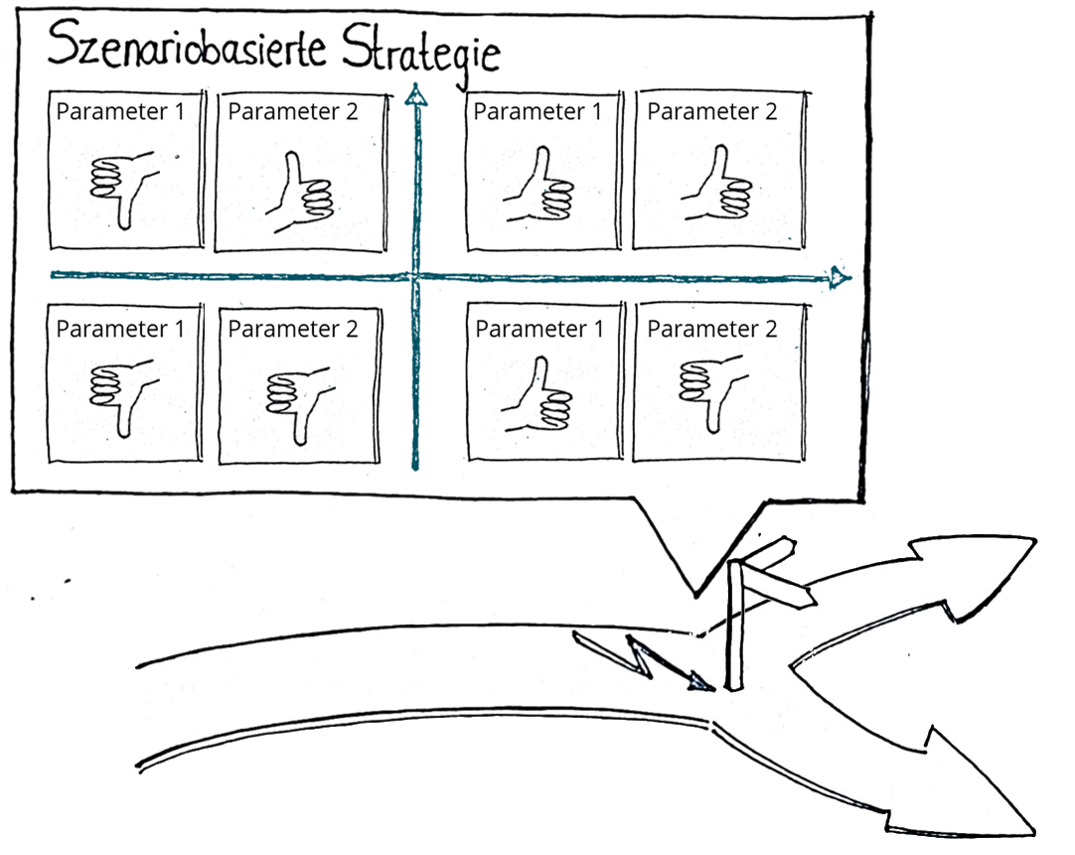When I joined Merus, the company had already been successful in the market for 20 years. So it is not easy to reconcile all the experience and best practices with the vision for the future. Fortunately, my colleagues were open to my ideas and the topics I brought back from my studies right from the start. This is not always a given - often the biggest challenge when developing a strategy is the rejection of the employees. Because I didn't have to struggle with that, I was able to get right into the thick of things. The goal was to develop a strategy for the communication of Merus for the next 10 years approximately.
Phase 1: Exploring the environment
I started with a classic SWOT analysis in which all employees were involved. Also an advantage of small companies: A "full survey" i.e. a survey of all employees is possible without any problems. So we started off individually and then considered together what strengths we have, what weaknesses we need to compensate for and where we see opportunities and risks in the future. Various scenarios actually emerged from the very beginning. So the discussions always went in one direction. "If everything remains as it is, we can invest in project X and drop approach y."; "If sales in area z increase, it would be good to invest more in q." And so on.
So we were basically back to where we started and the strategy of not having a strategy. The solution to this dilemma was the "scenario-based strategy", in our case the "scenario-based communication strategy".
Phase 2: Scenario-based communication strategy
 The scenarios are determined by external influences or changes in the environment of Merus. There are trends that are mutually dependent. For example, if a law were to be passed that bans chemical additives for water treatment, we would not only profit directly from this, but also our dealers. Also the way search algorithms work has an influence on how our website is found and how we can address customers.
The scenarios are determined by external influences or changes in the environment of Merus. There are trends that are mutually dependent. For example, if a law were to be passed that bans chemical additives for water treatment, we would not only profit directly from this, but also our dealers. Also the way search algorithms work has an influence on how our website is found and how we can address customers.
From the trends we were able to determine two parameters, which are positive or negative for us depending on the change. This results in four fields and four scenarios (worst case, best case and two mixed scenarios where one parameter changes negatively and one positively). Now we had concrete ideas of what the possible future of Merus could look like. For each scenario we were able to work out key figures (When is the point at which this scenario is considered to have occurred?) and measures (What do we do when the time comes?).
For example, in the current scenario we have decided not to invest a marketing budget in trade fairs. Instead, we rely on online marketing, good content on our website, targeted online advertising and cooperation with product testers. This is the best way for us at the moment. If external circumstances change, we are able to react quickly and test other ways. So practice and theory always go hand in hand and we are flexible.
End of the blog series
This brings me to the end of the blog series. I hope I was able to give an insight into the fact that it is possible and useful to bring a bit of management into small businesses without restricting.
